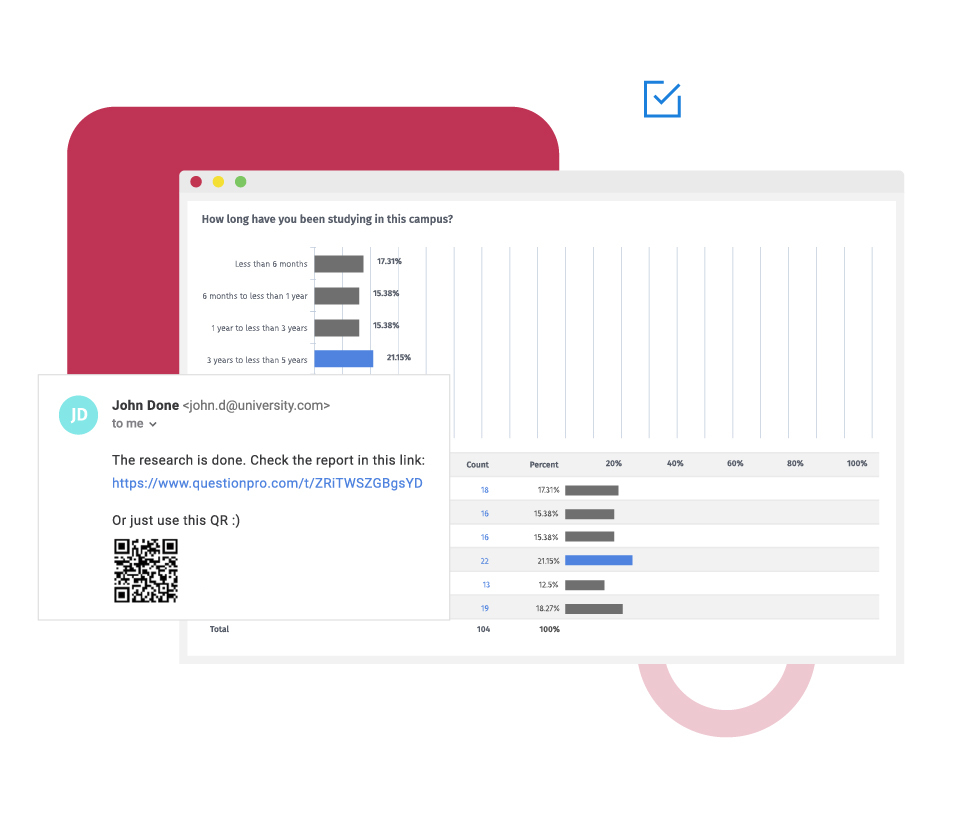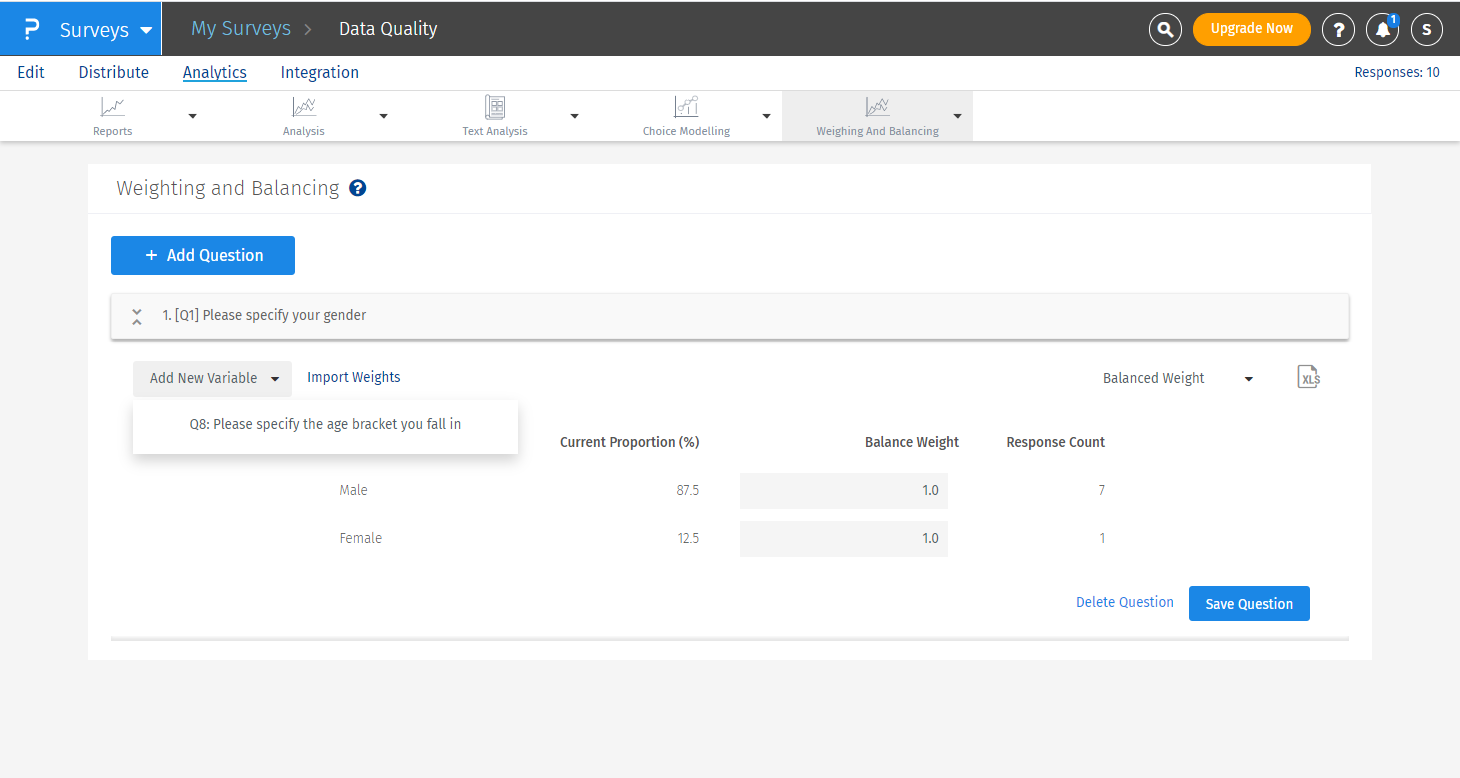Example of weighting and balancing
For example, your business deals with selling men's clothing and accessories, and males make up 80% of your total customer base. If you conduct a survey and gather data from 50% males and 50% females - you're in for significant sample bias. The survey data leans towards females, who account for 50% of the captured data, but only account for 20% of your customer base. I this case, apply weighting and balancing to control or eliminate responses shared by females in the survey.

Uses of weighting and balancing in surveys
The primary motive of weighting and balancing is to yield accurate data-backed decisions. This is achieved by eliminating data that does not add value to representing the population accurately. You can use weighting and balancing to eliminate demographic biases for the following and more:
Age bias
Gender bias
Location bias
Educational level
Marital status
Number of children
Advantages of weighting and balancing in surveys
The advantages of weighting and balancing are:
How to use weighting and balancing in your surveys?
Learn how to set up and use this feature with our help file on weighting and balancing.
Survey Software Easy to use and accessible for everyone. Design, send and analyze online surveys.
Research Suite A suite of enterprise-grade research tools for market research professionals.
Customer Experience Experiences change the world. Deliver the best with our CX management software.
Employee Experience Create the best employee experience and act on real-time data from end to end.






